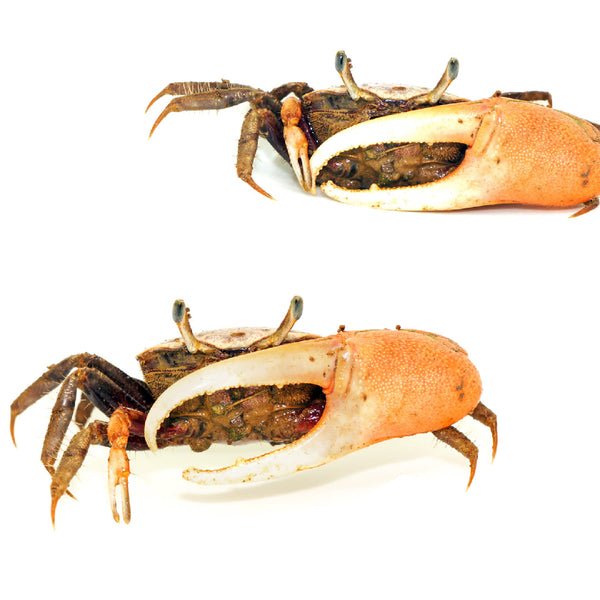Crab Claw Fishing: The Ultimate Guide to Catching Fresh Crabs Like a Pro
Crab claw fishing is an exciting outdoor activity that combines skill, patience, and the promise of a delicious seafood feast. Whether you’re fishing from a dock, pier, or boat, knowing the right equipment and techniques can significantly increase your success. In this guide, we’ll cover everything from essential gear and bait selection to expert fishing techniques and cost breakdowns.
If you love fresh crab, check out Global Seafoods for premium-quality crab products, including Snow Crab Legs Clusters and Golden King Crab.
Essential Gear for Crab Claw Fishing
To have a successful crabbing experience, you need the right equipment. Here’s a breakdown of what you’ll need and the estimated costs.
Crab Traps or Pots
- Crab traps allow crabs to enter but make it difficult for them to escape.
- Crab pots come in different sizes, and you may need a permit depending on your location.
- Cost: $20 – $150 (higher-end models offer better durability).
Bait for Crabbing
- Crabs are attracted to strong-smelling bait like:
- Chicken necks
- Fish heads
- Raw fish
- Rotten meat (effective but messy)
- Cost: $5 – $10 per trip (using kitchen scraps can save money).
Fishing Net
- A strong net helps scoop up crabs from the water after they enter the trap.
- Look for nets with a long handle and a wide mesh for easy retrieval.
- Cost: $15 – $50.
Protective Gloves
- Crab claws are sharp, and a good pair of gloves protects your hands from pinches and cuts.
- Waterproof gloves offer better grip and durability.
- Cost: $10 – $30.
For the freshest crab selections, explore Dungeness Crab Clusters at Global Seafoods.
Top Locations for Crab Claw Fishing
Finding the right spot is crucial for a successful crab claw fishing experience.
Best Locations to Catch Crabs
- Estuaries and Marshes: Crabs love brackish waters rich in vegetation.
- Piers and Docks: Ideal for setting traps in areas where crabs congregate.
- Tidal Flats: Best during incoming tides when crabs move towards shore to feed.
- Rocky Shores and Jetties: Offer natural hiding spots where crabs thrive.
If you’re fishing in a new area, ask local fishermen or bait shops for recommendations.
Techniques for Catching Crabs Successfully
Using the right techniques will increase your chances of catching crabs.
Step 1: Setting Your Trap Properly
- Choose a sturdy trap that stays anchored on the seafloor.
- Attach a buoy with your identification (required in some areas).
- Use fresh bait and secure it inside the trap to attract crabs.
Step 2: Checking Your Traps
- Crabs can escape if left too long. Check traps every 30 minutes to an hour.
- Ensure bait is still in place and replace it if needed.
Step 3: Retrieving Your Catch
- Pull traps up slowly and steadily to avoid startling the crabs.
- Use a fishing net to scoop them up before they escape.
Step 4: Removing the Claws Safely
- Hold the crab firmly from the back to avoid being pinched.
- Twist off each claw carefully to keep the meat intact.
For premium crab meat, visit Dungeness Crab Meat at Global Seafoods.
Cost Breakdown for Crab Claw Fishing Gear
Here’s an estimate of the expenses for getting started:
| Item | Cost Range |
|---|---|
| Crab Traps | $20 – $150 |
| Bait | $5 – $10 per trip |
| Fishing Net | $15 – $50 |
| Gloves | $10 – $30 |
| Total Estimated Cost | $50 – $240+ |
Note: Fishing permits and licenses vary by state or country.
Frequently Asked Questions (FAQs)
Do I Need a License for Crab Claw Fishing?
Yes, most regions require a recreational fishing license or permit for using crab traps or pots. Check local regulations before heading out.
What’s the Best Time to Catch Crabs?
- Incoming tides are best, as crabs move towards the shore.
- Early morning or late afternoon sees the most crab activity.
What Type of Bait Works Best?
The smellier, the better! Chicken necks, fish heads, and even spoiled meat are highly effective for attracting crabs.
How Can I Store Fresh Crabs?
- Keep them alive in a well-ventilated cooler with damp seaweed or ice packs.
- If already cooked, store in the refrigerator for up to three days.
For premium crab products, check out Cocktail Claws and Crab Meat at Global Seafoods.
Conclusion
Crab claw fishing is a fun and rewarding activity that provides fresh, delicious seafood straight from the water to your plate. With the right gear, techniques, and knowledge of prime locations, you’ll increase your chances of success. Always follow local fishing regulations, respect the environment, and handle crabs responsibly.
If you’re a seafood lover, elevate your dining experience with Snow Crab Legs Clusters or Dungeness Crab Clusters from Global Seafoods.
For more expert seafood tips and cooking inspiration, visit the Global Seafoods YouTube Channel.
Related Links:
- Buy and Prepare King Crab
- Featured Seafood Products
- Live Seafood Selection



